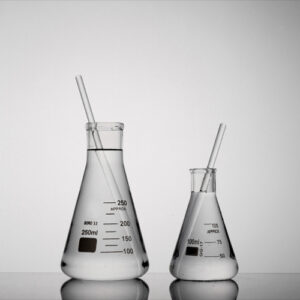Introduction
In the realm of materials science, Polyvinylidene Difluoride (PVDF) stands as a remarkable polymer with a multitude of applications. Its unique combination of properties makes it highly sought after in various industries. This comprehensive article will delve deep into the key properties of PVDF, exploring its chemical structure, mechanical characteristics, thermal stability, electrical properties, and more. We will also touch upon its applications and provide a frequently asked questions (FAQ) section to address common queries regarding this versatile material.
Chemical Structure of PVDF

Polyvinylidene Difluoride, commonly known as PVDF, is a synthetic polymer with a fascinating chemical structure. It is composed of carbon, hydrogen, and fluorine atoms, arranged in a highly crystalline form. The polymer consists of repeating units of (-CH2-CF2-), which gives PVDF its distinct properties.
Mechanical Strength and Durability
PVDF exhibits exceptional mechanical properties, making it a preferred choice in various engineering applications. Its high tensile strength, combined with excellent resistance to wear and tear, ensures that PVDF components can withstand harsh conditions. Whether used in pipes, valves, or coatings, PVDF’s mechanical robustness is a key asset.
Thermal Stability
One of the key features of PVDF is its outstanding thermal stability. It can endure a wide range of temperatures without significant degradation. PVDF maintains its integrity even when exposed to extreme heat or cold, making it suitable for applications where temperature fluctuations are common.
Chemical Resistance
PVDF’s resistance to a broad spectrum of chemicals is another remarkable property. It is impervious to most acids, bases, solvents, and corrosive substances. This attribute makes PVDF an ideal choice for lining storage tanks, chemical processing equipment, and laboratory applications where chemical resistance is crucial.
Electrical Properties
PVDF is an excellent electrical insulator. Its high dielectric constant and low dissipation factor make it suitable for use in electrical and electronic components. PVDF films are employed in capacitors, piezoelectric devices, and sensors, where precise electrical properties are essential.
Piezoelectric Behavior
One of the most intriguing properties of PVDF is its piezoelectric behavior. When subjected to mechanical stress or pressure, PVDF generates an electric charge, and vice versa. This property is harnessed in various applications, including sensors, transducers, and ultrasound imaging devices.
UV Resistance
PVDF exhibits excellent resistance to ultraviolet (UV) radiation. This UV stability makes it a preferred choice for outdoor applications, such as architectural coatings, solar panels, and photovoltaic films.
Biocompatibility
In biomedical applications, PVDF’s biocompatibility is highly valued. It is used in medical implants and devices because it does not elicit adverse reactions within the human body. This property ensures that PVDF is a safe and reliable choice for healthcare applications.
Ease of Processing

PVDF can be easily processed into various forms, including sheets, films, rods, and fibers. Its versatility in processing methods, such as extrusion, injection molding, and solvent casting, makes it adaptable to a wide range of applications.
Applications of PVDF
PVDF’s unique combination of properties has led to its widespread use in numerous industries:
- Chemical Industry: PVDF is used for lining pipes, tanks, and vessels in chemical processing plants due to its excellent chemical resistance.
- Electronics: Its electrical properties make PVDF suitable for capacitors, sensors, and cables in the electronics industry.
- Aerospace: PVDF’s lightweight nature and resistance to extreme temperatures make it valuable in aerospace applications.
- Medical: Biocompatible PVDF is utilized in medical devices such as catheters and implants.
- Construction: UV-resistant PVDF coatings are employed in architectural applications.
Frequently Asked Questions (FAQ)
Q1: Is PVDF environmentally friendly?
A1: PVDF is considered relatively environmentally friendly due to its durability, which extends the lifespan of products and reduces waste. However, the production process involves the use of fluorinated compounds, which can have environmental implications if not managed properly.
Q2: Can PVDF be recycled?
A2: Yes, PVDF can be recycled, but the process is more complex compared to recycling some other plastics. Recycling PVDF typically involves chemical processes to break down the polymer, making it less common than the recycling of more straightforward plastics like PET or HDPE.
Q3: What are some common drawbacks of PVDF?
A3: While PVDF possesses numerous desirable properties, it can be relatively expensive compared to other polymers. Additionally, its processing may require specialized equipment and expertise.
Q4: Are there any health concerns associated with PVDF?
A4: PVDF is generally considered safe for most applications, including those in contact with food and the human body. However, like any material, precautions should be taken during its processing and manufacturing to minimize potential risks.
Q5: Where else can I find PVDF in everyday life?
A5: PVDF can be found in everyday items such as kitchen utensils, dental floss, and certain types of clothing due to its versatility and durability.
Conclusion
Polyvinylidene Difluoride (PVDF) is a polymer with a wide array of exceptional properties, making it indispensable in diverse industries. Its chemical structure, mechanical strength, thermal stability, electrical properties, and more, contribute to its widespread use. With applications ranging from chemical processing to medical devices, PVDF’s versatility continues to drive innovation and progress in various fields. Understanding its key properties is crucial for harnessing the full potential of this remarkable material.


